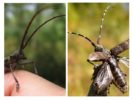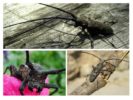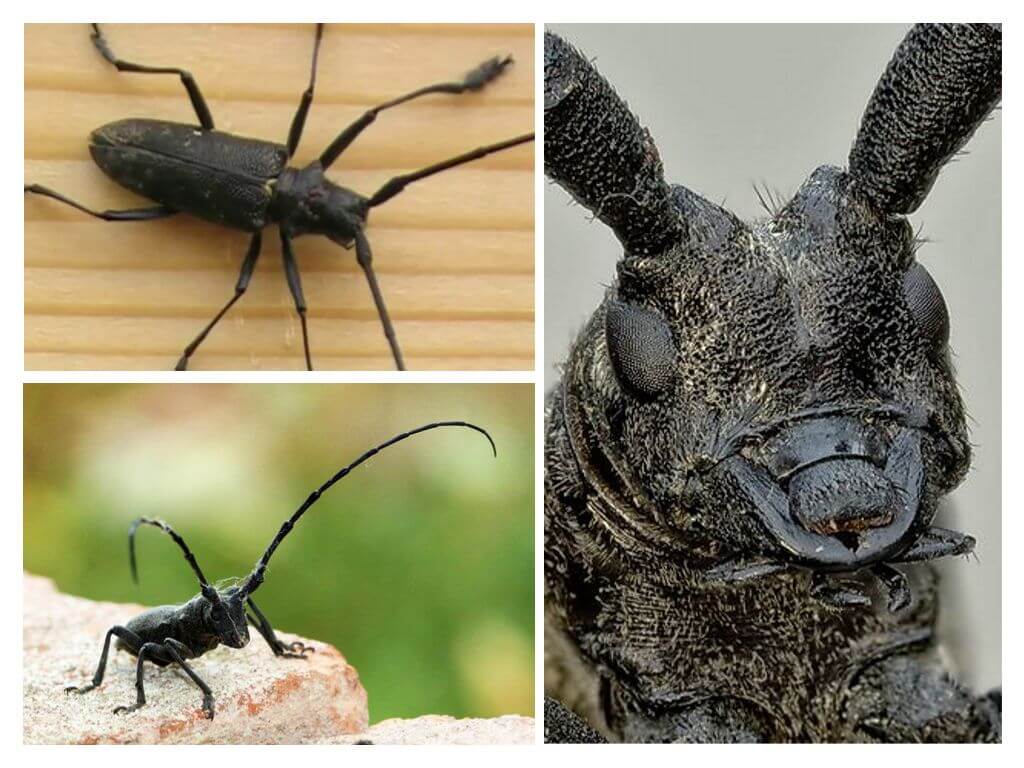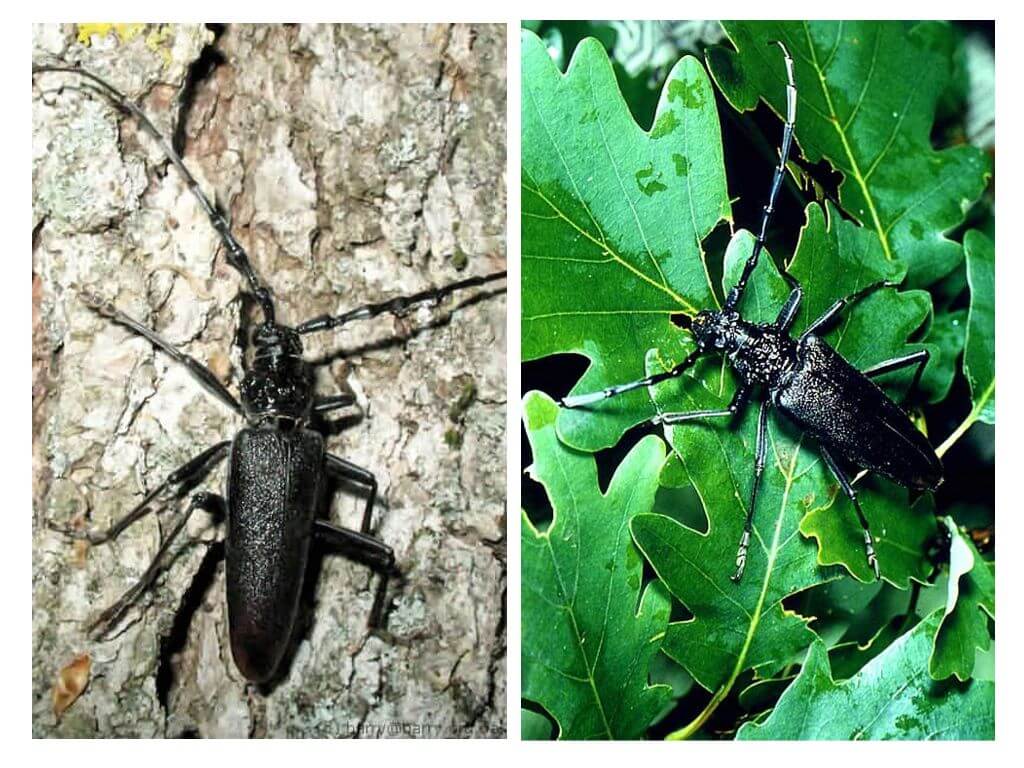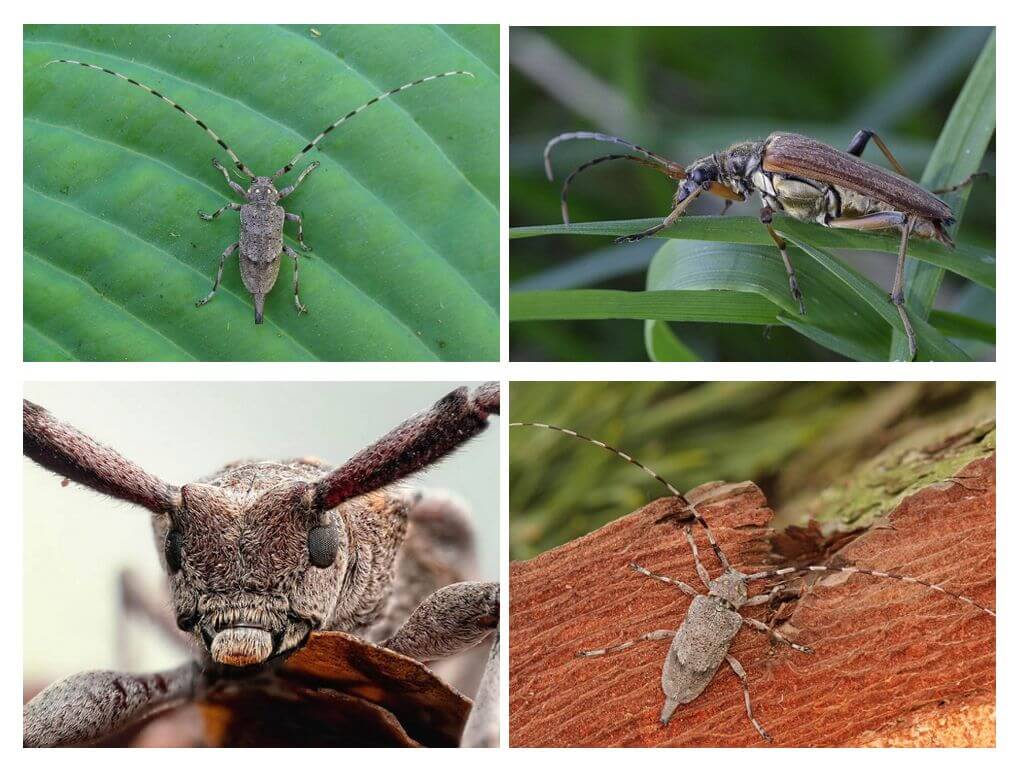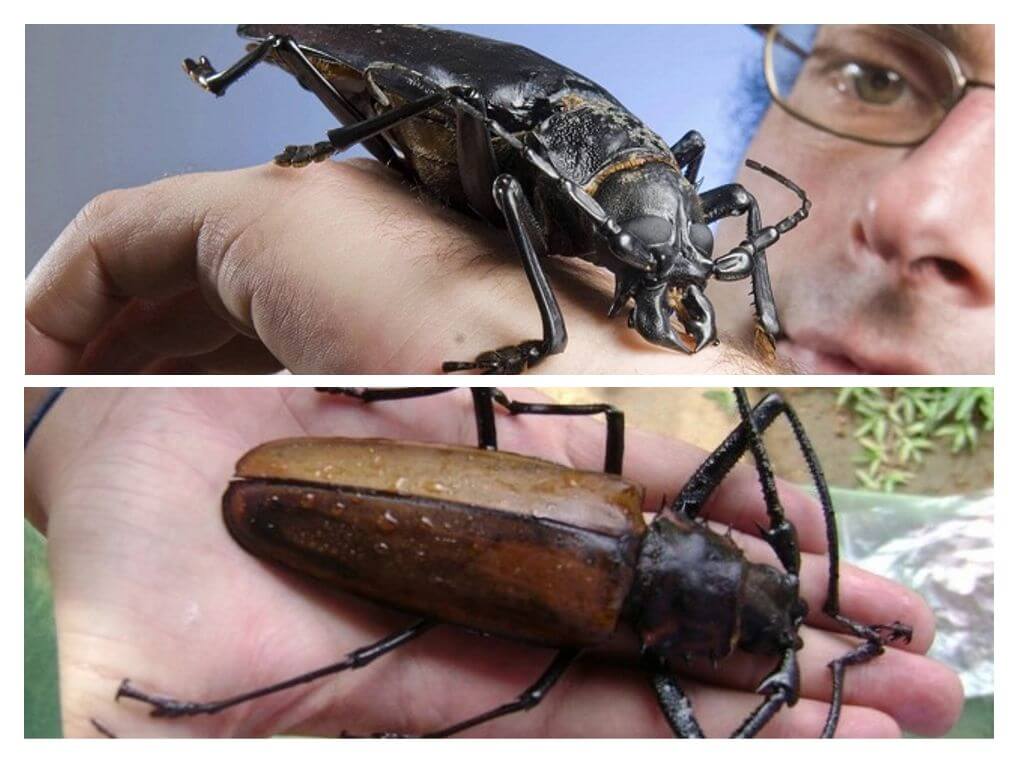- Pine Barbel
- Insect habitat
Black pine barbel - a bug that belongs to the order of beetles. Meet this representative barbel almost everywhere: in Europe and Africa, in Siberia and the Caucasus. This is one of the most dangerous pine pests. In rare cases, this black beetle damages fir, spruce and even larch.
Appearance
The black pine barbel represents an insect whose body dimensions reach up to 2.5 cm. The beetle has a black color with a bronze tint. On flat, having a granular surface, elytra interspersed with red and gray hairs are noted. The main feature of the pine barbel is its magnificent mustache, the length of which in males is 2 times longer than the length of their own body. In females, they are distinguished by a motley color. The shield has a white-yellow, and sometimes rusty-yellow cover. Below is a pine barbel in the photo.
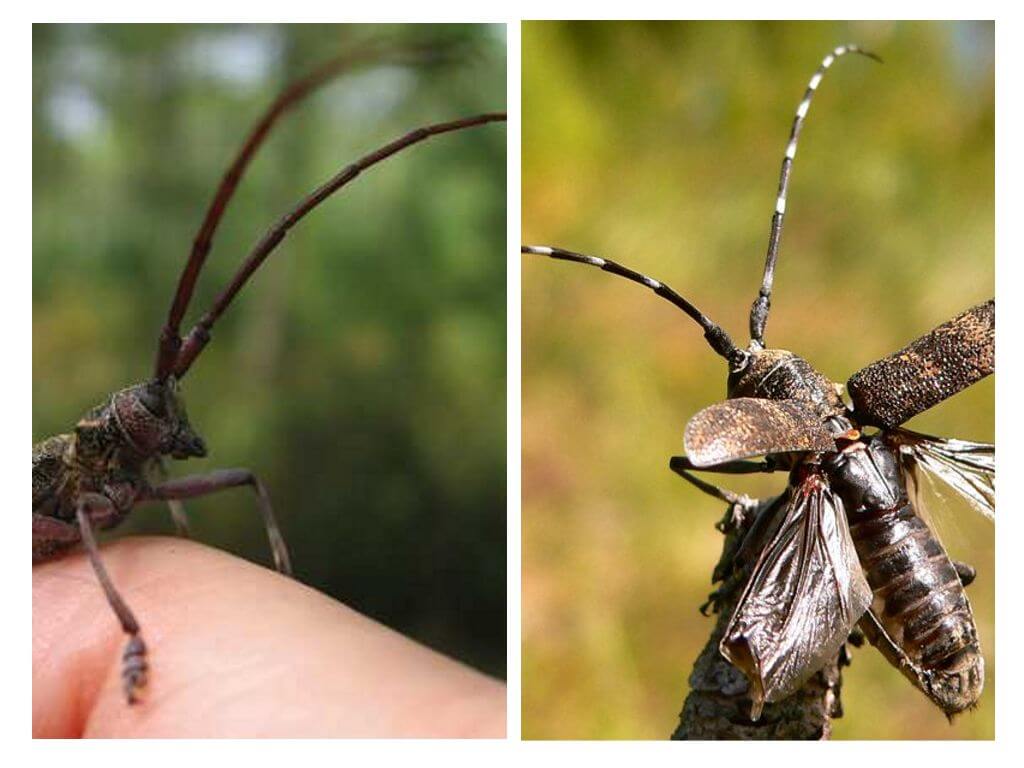
Lifestyle
Newfound beetles leave their cradles in the wood in late spring. They lead an active lifestyle from the end of June to September, using fresh young bark as additional food.
Interesting!
Black pine barbel is a photophilous insect, therefore, prefers separate or sparse plantations. In mixed forests, one can observe a sharp drop in the number of pine barbel.
The insect spreads throughout the tree trunk: moreover, females more often appear in the butt part, males in the upper part.
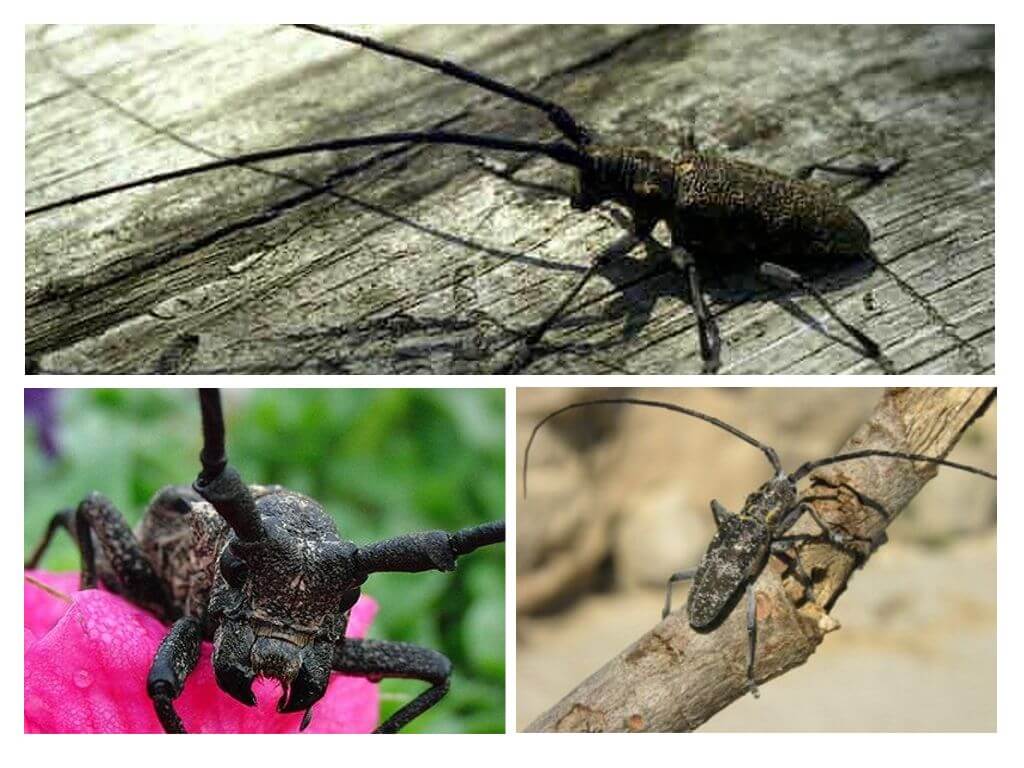
Breeding
The life expectancy of insects is very small - they live a little more than 3 months. Therefore, the females try to lay eggs as soon as possible in the notches that they make for this purpose in the pine bark. After 1-2 weeks, larvae appear on the eggs, feeding on sapwood and bast. Gnawing entire platforms, they rush closer and closer to the wood layer. Periodically, they are forced to crawl out of their moves, expanding and cleaning them from drill flour.
At the end of the tunnel, the larva arranges for itself a crib in which it hibernates. The pupation process ends in late spring. Then a young black pine barbel, gnawing through the tunnel, comes out. However, the development of larvae is not always one-year-old, adverse conditions inhibit its development, as a result of which a beetle from a pupa appears only after 2 years.
Harm
Insect larvae cause great harm to forestry. Making deep moves in the wood of non-sanded logs, they make this timber unsuitable for use.
